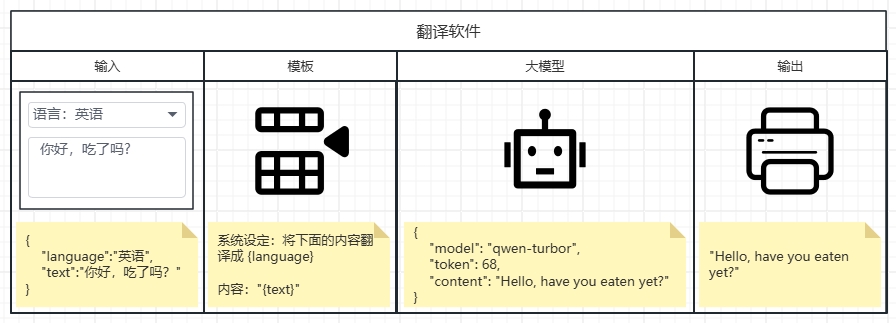在 Python 多线程编程中,concurrent.futures 模块提供了一个高层的接口来异步执行可调用对象。今天,我们将通过一个循序渐进的案例,深入了解如何使用这个强大的工具。
从一个模拟场景开始
假设我们需要处理一批网络请求。为了模拟这个场景,我们使用 sleep 来代表耗时操作:
import time
import randomdef slow_operation(task_id):"""模拟一个耗时的网络请求"""sleep_time = random.uniform(0.5, 2)time.sleep(sleep_time)return f"Task {task_id} completed in {sleep_time:.2f} seconds"# 串行处理
def process_serial():start = time.perf_counter()results = []for i in range(10):result = slow_operation(i)results.append(result)end = time.perf_counter()print(f"串行处理总耗时:{end - start:.2f} 秒")return results# 运行示例
if __name__ == '__main__':results = process_serial()for r in results:print(r)
串行处理总耗时:11.75 秒
Task 0 completed in 1.27 seconds
Task 1 completed in 1.10 seconds
Task 2 completed in 1.35 seconds
Task 3 completed in 1.36 seconds
Task 4 completed in 1.42 seconds
Task 5 completed in 1.55 seconds
Task 6 completed in 0.74 seconds
Task 7 completed in 0.55 seconds
Task 8 completed in 1.40 seconds
Task 9 completed in 0.97 seconds
运行这段代码,你会发现处理 10 个任务需要大约 10-15 秒。这显然不够高效。
使用传统的 threading 模块
让我们先看看使用传统的 threading 模块如何改进:
import threading
from queue import Queuedef slow_operation(task_id):"""模拟一个耗时的网络请求"""sleep_time = random.uniform(0.5, 2)time.sleep(sleep_time)return f"Task {task_id} completed in {sleep_time:.2f} seconds"def process_threading():start = time.perf_counter()results = []work_queue = Queue()lock = threading.Lock()# 填充工作队列for i in range(10):work_queue.put(i)def worker():while True:try:task_id = work_queue.get_nowait()result = slow_operation(task_id)with lock:results.append(result)work_queue.task_done()except Queue.Empty:breakthreads = []for _ in range(4): # 使用4个线程t = threading.Thread(target=worker)t.start()threads.append(t)for t in threads:t.join()end = time.perf_counter()print(f"多线程处理总耗时:{end - start:.2f} 秒")return results
多线程处理总耗时:3.24 秒
这个版本使用了多线程,性能确实提升了,但代码比较复杂,需要手动管理线程、锁和队列。
concurrent.futures 的优雅解决方案
现在,让我们看看如何使用 concurrent.futures 来简化代码:
import time
import random
from concurrent.futures import ThreadPoolExecutor, as_completeddef slow_operation(task_id):"""模拟一个耗时的网络请求"""sleep_time = random.uniform(0.5, 2)time.sleep(sleep_time)return f"Task {task_id} completed in {sleep_time:.2f} seconds"def process_concurrent():start = time.perf_counter()results = []# 创建线程池,设置最大线程数为4with ThreadPoolExecutor(max_workers=4) as executor:# 提交任务到线程池future_to_id = {executor.submit(slow_operation, i): i for i in range(10)}# 获取结果for future in as_completed(future_to_id):results.append(future.result())end = time.perf_counter()print(f"concurrent.futures 处理总耗时:{end - start:.2f} 秒")return resultsprocess_concurrent()
concurrent.futures 处理总耗时:3.54 秒
这里我们用到了几个关键概念:
-
ThreadPoolExecutor :线程池执行器,用于管理一组工作线程。创建时可以指定最大线程数。
-
executor.submit() :向线程池提交一个任务。返回 Future 对象,代表将来某个时刻会完成的操作。
-
as_completed() :返回一个迭代器,在 Future 完成时产生对应的 Future 对象。这意味着结果是按照完成顺序而不是提交顺序返回的。
Future 对象的高级用法
Future 对象提供了多个有用的方法,让我们通过实例来了解:
import time
import random
from concurrent.futures import ThreadPoolExecutor, wait, FIRST_COMPLETEDdef slow_operation(task_id):"""模拟一个耗时的网络请求"""sleep_time = random.uniform(0.5, 2)time.sleep(sleep_time)return f"Task {task_id} completed in {sleep_time:.2f} seconds"def demonstrate_future_features():with ThreadPoolExecutor(max_workers=4) as executor:# 提交任务并获取 Future 对象futures = [executor.submit(slow_operation, i) for i in range(10)]# 1. done() 检查任务是否完成print("检查第一个任务是否完成:", futures[0].done())# 2. 使用 wait() 等待部分任务完成done, not_done = wait(futures, return_when=FIRST_COMPLETED)print(f"完成的任务数: {len(done)}, 未完成的任务数: {len(not_done)}")# 3. 获取结果时设置超时try:result = futures[0].result(timeout=1.0)print("获取到结果:", result)except TimeoutError:print("获取结果超时")# 4. cancel() 取消未开始的任务for f in not_done:cancelled = f.cancel()print(f"取消任务: {'成功' if cancelled else '失败'}")demonstrate_future_features()
检查第一个任务是否完成: False
完成的任务数: 1, 未完成的任务数: 9
获取到结果: Task 0 completed in 1.07 seconds
取消任务: 失败
取消任务: 成功
取消任务: 成功
取消任务: 失败
取消任务: 失败
取消任务: 失败
取消任务: 失败
取消任务: 成功
取消任务: 失败
线程/进程池还是异步 IO?
IO 密集型任务:优先选择 asyncio
为什么选择 asyncio ?
- 更低的资源开销:
asyncio使用协程,不需要创建额外的线程或进程 - 更高的并发量:单线程可以轻松处理数千个并发任务
- 没有 GIL 的限制:协程在单线程内切换,完全规避了 GIL 的影响
让我们通过一个网络请求的例子来对比:
import asyncio
import time
from concurrent.futures import ThreadPoolExecutor# 模拟网络请求
def sync_request(url):time.sleep(1) # 模拟网络延迟return f"Response from {url}"async def async_request(url):await asyncio.sleep(1) # 模拟网络延迟return f"Response from {url}"# 使用线程池
def thread_pool_example():urls = [f"http://example.com/{i}" for i in range(100)]start = time.perf_counter()with ThreadPoolExecutor(max_workers=20) as executor:results = list(executor.map(sync_request, urls))end = time.perf_counter()print(f"ThreadPoolExecutor 耗时: {end - start:.2f} 秒")return results# 使用 asyncio
async def asyncio_example():urls = [f"http://example.com/{i}" for i in range(100)]start = time.perf_counter()tasks = [async_request(url) for url in urls]results = await asyncio.gather(*tasks)end = time.perf_counter()print(f"asyncio 耗时: {end - start:.2f} 秒")return resultsif __name__ == '__main__':# 运行线程池版本thread_results = thread_pool_example()# 运行 asyncio 版本asyncio_results = asyncio.run(asyncio_example())
ThreadPoolExecutor 耗时: 5.03 秒
asyncio 耗时: 1.00 秒
在这个例子中, asyncio 版本通常会表现出更好的性能,尤其是在并发量大的情况下。
CPU 密集型任务:使用 ProcessPoolExecutor
为什么选择多进程?
- 绕过 GIL:每个进程都有自己的 Python 解释器和 GIL
- 充分利用多核性能:可以真正实现并行计算
- 适合计算密集型任务:如数据处理、图像处理等
来看一个计算密集型任务的对比:
import time
from concurrent.futures import ProcessPoolExecutor, ThreadPoolExecutordef cpu_intensive_task(n):"""计算密集型任务:计算大量浮点数运算"""result = 0for i in range(n):result += i ** 2 / 3.14return resultdef compare_performance():numbers = [10**6] * 20 # 20个大规模计算任务# 使用线程池start = time.perf_counter()with ThreadPoolExecutor(max_workers=4) as executor:thread_results = list(executor.map(cpu_intensive_task, numbers))thread_time = time.perf_counter() - startprint(f"线程池耗时: {thread_time:.2f} 秒")# 使用进程池start = time.perf_counter()with ProcessPoolExecutor(max_workers=4) as executor:process_results = list(executor.map(cpu_intensive_task, numbers))process_time = time.perf_counter() - startprint(f"进程池耗时: {process_time:.2f} 秒")if __name__ == '__main__':compare_performance()
线程池耗时: 4.61 秒
进程池耗时: 1.34 秒
在这种场景下, ProcessPoolExecutor 的性能明显优于 ThreadPoolExecutor 。
混合型任务:ThreadPoolExecutor 的优势
为什么有时候选择线程池?
- 更容易与现有代码集成:大多数 Python 库都是基于同步设计的
- 资源开销比进程池小:线程共享内存空间
- 适合 IO 和 CPU 混合的场景:当任务既有 IO 操作又有计算时
示例场景:
import time
from concurrent.futures import ProcessPoolExecutor, ThreadPoolExecutordef mixed_task(task_id):"""混合型任务:既有 IO 操作又有计算"""# IO 操作time.sleep(0.5)# CPU 计算result = sum(i * i for i in range(10**5))# 再次 IO 操作time.sleep(0.5)return f"Task {task_id}: {result}"def demonstrate_mixed_workload():tasks = range(10)# 使用线程池start = time.perf_counter()with ThreadPoolExecutor(max_workers=4) as executor:thread_results = list(executor.map(mixed_task, tasks))thread_time = time.perf_counter() - startprint(f"线程池处理混合任务耗时: {thread_time:.2f} 秒")# 使用进程池start = time.perf_counter()with ProcessPoolExecutor(max_workers=4) as executor:process_results = list(executor.map(mixed_task, tasks))process_time = time.perf_counter() - startprint(f"进程池处理混合任务耗时: {process_time:.2f} 秒")if __name__ == '__main__':demonstrate_mixed_workload()
线程池处理混合任务耗时: 3.05 秒
进程池处理混合任务耗时: 3.11 秒
选择建议的决策树
在选择并发方案时,可以参考以下决策流程:
-
首先判断任务类型:
- 如果是纯 IO 密集型(网络请求、文件操作),优先选择 asyncio
- 如果是纯 CPU 密集型(大量计算),优先选择
ProcessPoolExecutor - 如果是混合型任务,考虑使用
ThreadPoolExecutor
-
考虑其他因素:
- 现有代码是否易于改造为异步?
- 是否需要与同步代码交互?
- 并发量有多大?
- 是否需要跨进程通信?
def choose_concurrency_model(task_type, concurrent_count,legacy_code=False,need_shared_memory=False):"""帮助选择并发模型的示例函数"""if task_type == "IO":if legacy_code or need_shared_memory:return "ThreadPoolExecutor"else:return "asyncio"elif task_type == "CPU":if need_shared_memory:return "ThreadPoolExecutor"else:return "ProcessPoolExecutor"else: # mixedif concurrent_count > 1000:return "asyncio"else:return "ThreadPoolExecutor"
性能对比总结
| 方案 | IO密集型 | CPU密集型 | 混合型 | 资源开销 | 代码复杂度 |
|---|---|---|---|---|---|
| asyncio | 最佳 | 较差 | 好 | 最低 | 较高 |
| ThreadPoolExecutor | 好 | 较差 | 较好 | 低 | 低 |
| ProcessPoolExecutor | 一般 | 最佳 | 一般 | 高 | 低 |
总的来说,选择合适的并发方案需要综合考虑任务特性、性能需求、代码复杂度等多个因素。在实际应用中,有时候甚至可以混合使用多种方案,以达到最优的性能表现。
实用技巧总结
- 控制线程池大小
def demonstrate_pool_sizing():# CPU 核心数cpu_count = os.cpu_count()# IO 密集型任务,线程数可以设置为核心数的 1-4 倍io_bound_workers = cpu_count * 2# CPU 密集型任务,线程数不应超过核心数cpu_bound_workers = cpu_countprint(f"推荐的线程数:")print(f"IO 密集型任务:{io_bound_workers}")print(f"CPU 密集型任务:{cpu_bound_workers}")
- 批量提交任务
def demonstrate_batch_submit():with ThreadPoolExecutor(max_workers=4) as executor:results_ordered = list(executor.map(slow_operation, range(5)))futures = [executor.submit(slow_operation, i) for i in range(5)]results_completion = [f.result() for f in as_completed(futures)]return results_ordered, results_completion
- 错误处理
def demonstrate_error_handling():def faulty_operation(task_id):if task_id == 3:raise ValueError(f"Task {task_id} failed")return slow_operation(task_id)with ThreadPoolExecutor(max_workers=4) as executor:futures = [executor.submit(faulty_operation, i) for i in range(5)]for future in as_completed(futures):try:result = future.result()print(f"成功:{result}")except Exception as e:print(f"错误:{str(e)}")
总结
concurrent.futures 模块为 Python 并发编程提供了一个优雅的高级接口。相比传统的 threading / multiprocessing 模块,它具有以下优势:
- 使用线程池自动管理线程的生命周期
- 提供简洁的接口提交任务和获取结果
- 支持超时和错误处理
- 代码更加 Pythonic 和易于维护
希望这篇文章能帮助你更好地理解和使用 Python 的并发编程工具!





![【unity]学习制作类银河恶魔城游戏-2-](https://img2024.cnblogs.com/blog/3580628/202412/3580628-20241224235449752-1697143448.png)





